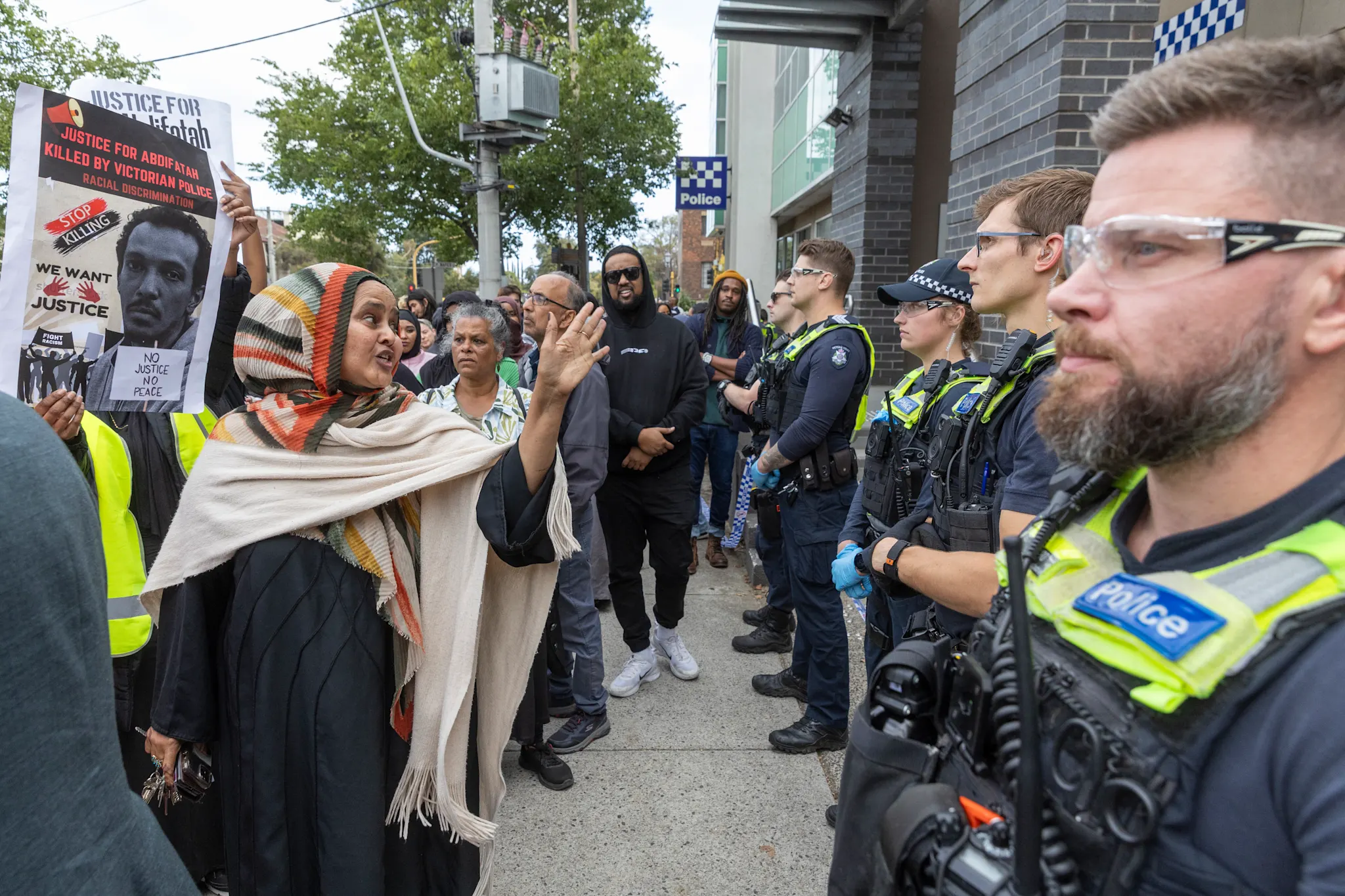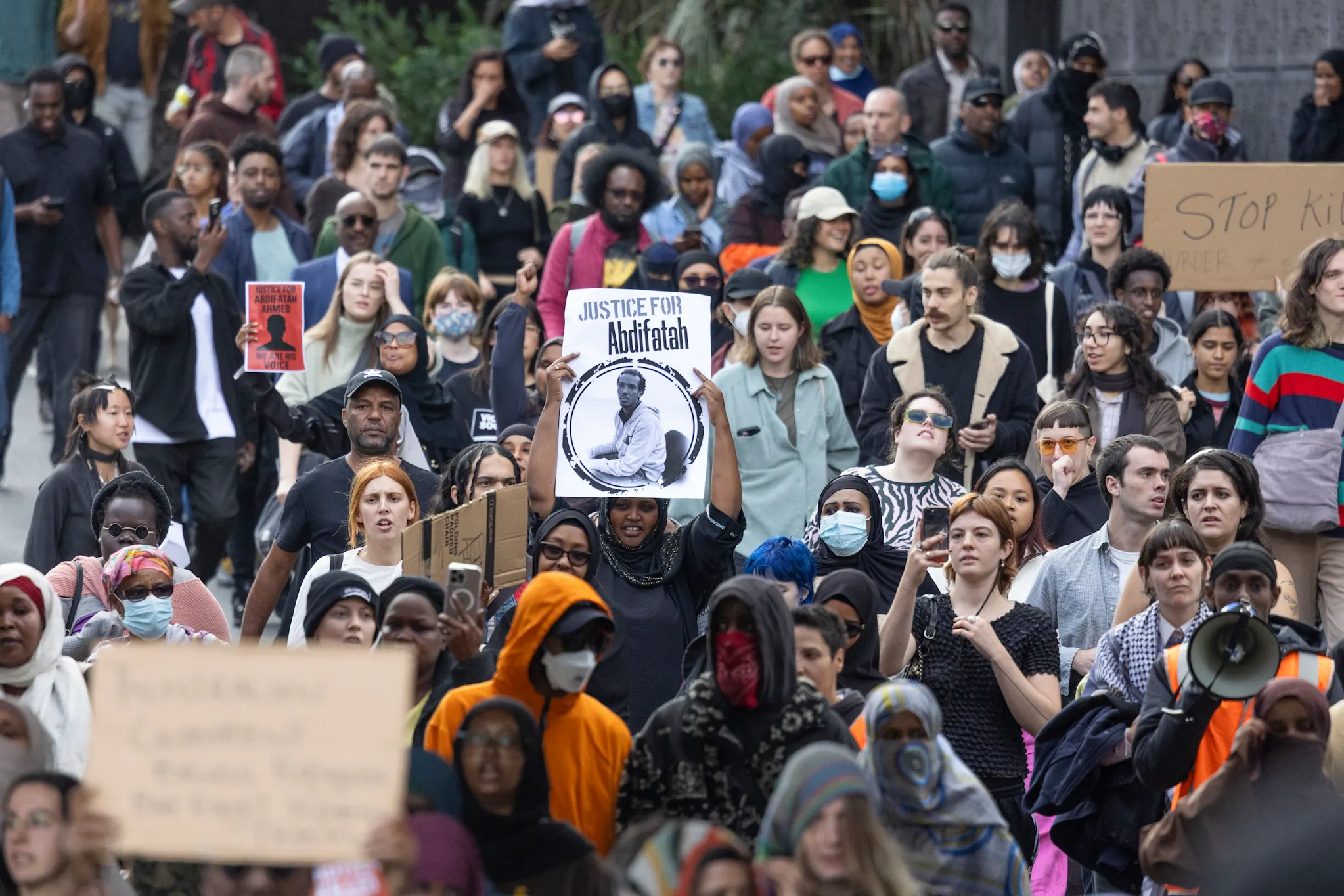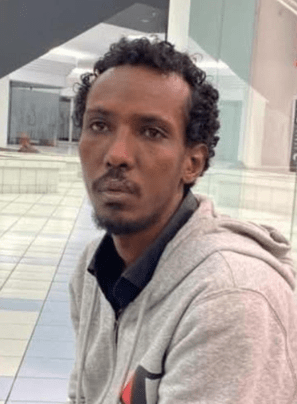What began as a peaceful protest in the heart of Footscray on Tuesday erupted into chaos, as tensions flared following the police shooting of Abdifatah Ahmed, a 35-year-old rough sleeper with mental health issues.
More than 250 demonstrators gathered at Nicholson Street in Melbourne’s inner west to demand justice for Ahmed, who was shot dead by police last Thursday night after allegedly approaching officers with a knife.
Many carried placards reading “Black Lives Matter” and “Mental health needs care, not bullets,” while sunflowers and white roses marked the site of his death—just metres away from the rally route.
Chants of “no justice, no peace” and “compassion not bullets” echoed through the Footscray CBD as the crowd marched to the local police station, calling for systemic reform, greater mental health support, and an independent inquiry into the fatal shooting.
But after hours of calm, a sudden confrontation on Irving Street shattered the relative peace. A man emerged from the dispersing crowd, shouting at police before charging toward an officer.

As police moved to intervene, a small group of demonstrators began hurling bottles and rocks. Police deployed defensive tactics to restore order. No injuries were reported, and no arrests were made, but the incident is now under review.
“Police were then confronted with a small volatile crowd of around 30 people, with bottles being thrown at police,” a Victoria Police spokeswoman said. “Shortly after, the area was cleared and people dispersed.”
Senior African community members were seen stepping in swiftly to de-escalate the clash, a move praised by both protesters and police on the ground.

A Death That Reignited a Community’s Anguish
Ahmed’s killing has reignited long-standing tensions between Victoria Police and marginalised communities—particularly those grappling with poverty, homelessness, and mental illness.
On the night of the shooting, police say officers were called to Albert Street after reports that a man was brandishing a knife near a shopping plaza. Officers instructed Ahmed to drop the weapon, but discharged their firearms after he allegedly lunged at them.
Body-worn camera footage has not been publicly released, but video from bystanders shows two officers with weapons drawn as Ahmed lay critically injured. He died at the scene.
Victoria Police confirmed the officers involved were not equipped with Tasers—a fact that has amplified public outrage.
“We understand the community is concerned about this incident – this is something no police officer wants to be involved in when they come to work,” the police statement said. “Unfortunately, police were confronted with an extremely volatile and high-risk situation and made a tactical decision to use their firearms in a small matter of moments.”
An investigation is now underway, led by the Homicide Squad with oversight from the Professional Standards Command. The matter will also be reviewed by the Coroner.
Ahmed, who had previously lived interstate, is survived by family members in Australia. He is being remembered by locals as a “gentle soul” who was well-known among Footscray’s homeless community.
A City at a Crossroads

Footscray, once a symbol of Melbourne’s multicultural resilience, is now at the centre of a public reckoning. Over the past 18 months, residents have reported a spike in crime, open drug use, and anti-social behaviour.
“We’re seeing more people on the streets, more people struggling with mental illness and addiction—and it’s not being met with care, it’s being met with force,” said one local business owner, who asked not to be named for fear of reprisal.
Despite a $214 million state government pledge in 2021 to equip all frontline police with Tasers, Victoria Police say only 60 per cent of officers currently have access to them. The rollout is expected to be completed by September 2025.
“The rollout is moving as fast as it possibly can,” the statement said, “while ensuring every member who receives a Taser undergoes comprehensive training and police stations are fitted out to safely store the devices.”
The officers involved in Ahmed’s death are currently on leave, as per protocol.
Mental Health in Crisis
The tragedy has reignited debate about how police interact with people experiencing mental health crises. In Victoria alone, 1 in 5 police call-outs involve a person with a diagnosed mental illness. According to the Australian Institute of Health and Welfare, people with severe mental health issues are overrepresented in fatal police incidents.
Critics argue the system is failing vulnerable people like Ahmed.
“There is a glaring gap in how we treat mental health on the streets,” said a spokesperson for the Mental Health Legal Centre. “Had there been trained mental health professionals responding that night, we might be telling a different story.”
As mourners continue to lay flowers where Ahmed took his final breath, calls for change grow louder. For many in Footscray, the message is simple: compassion, not confrontation.
If you or anyone you know is struggling, call Lifeline 13 11 14

